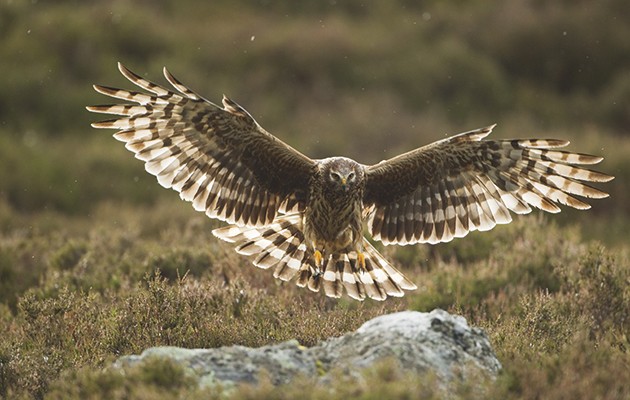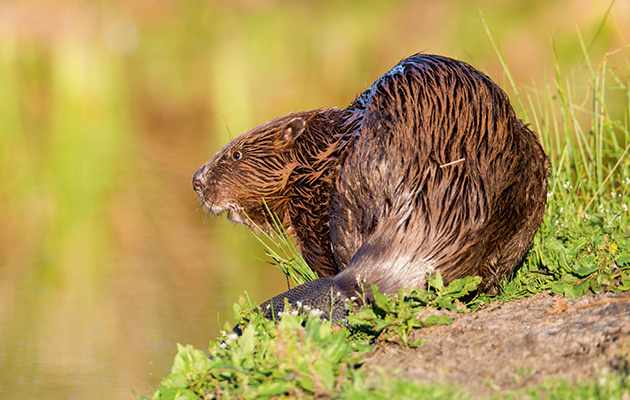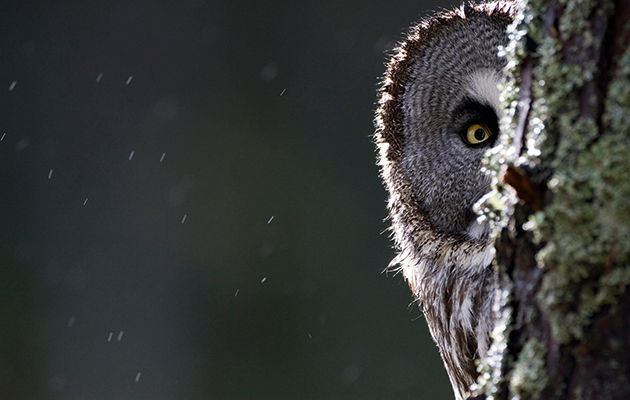Conservationists are at loggerheads with landowners while locals row with NGOs. Rob Yorke explains why and – crucially – how we must work together to end the conservation conflict
Conservation conflict has always been a part of the conversation surrounding wildlife, but Rob Yorke is determined to advocate peace, not war. With brave leadership and a willingness to leave partisan values behind, can a solution be reached?
If your shoot is doing great conservation work then don’t forget to enter the 2016 Purdey Awards for Game and Conversation. Read the 2016 Purdey Awards: entries now open for more information.
CONSERVATION CONFLICT
What do mute swan feeding habits, Iran’s nuclear programme and agri-environment schemes have in common? Conflict, in three guises: over damage to habitat, nuclear weapons and land use for food production. The odd one out is the Iranian deal. Of the three, this provides the most promising outcome to resolve a conflict with the announcement that, “We are reaching an agreement that is not perfect for anybody, but it is what we could accomplish and is it an important achievement for all of us.”
Indeed, the language around last year’s Iranian nuclear deal uncannily echoes that found within a book Conflicts in conservation: navigating towards solutions published by Cambridge University Press last May. “The real test of the deal is whether it is better than the alternatives… threatened, they would be more likely to dig in their heels… the program (sic) would go underground… the more ties to the outside world, the stronger moderating voices will become”. These are phrases common within biodiversity conservation conflict.
The book about conservation conflict, edited by four experienced scientists (Redpath, Wood, Gutierrez and Young) is not just an academic treatise. It introduces us to the challenge that “as pressures on the environment from ever-increasing numbers of people and demands for natural resources grow, so must the number of conservation problems”. Its meticulously referenced text is interspersed with 20 global examples of human interactions with tigers, great white sharks and lions and more prosaic stand-offs with seals, waders and spotted owls.
CONSERVATION CONFLICT: COMPLEX PATTERNS
Patterns emerge in conservation conflict that run in cross- cutting seams through complex layers of natural sciences, livelihoods, power struggles, frustrations, preconceptions and prejudices interwoven with philosophy, ethics, economics, anthropology, politics and psychology. The book is a fascinatingly bold attempt, not just dissecting how conflicts arise, but in digging deeper into the complex systemic root causes often buried and rarely vocalised, that make you exclaim, “So that’s why the conflict’s where it is today!”
Is this because we perceive nature to be external to society? Undertake the science research, report back to humans and then impose ecologically informed policies in the name of conservation on those working at the “grass roots”. Those whose livelihoods or interests are most directly affected by actions – referred to as “locals” – might not be involved in forming policies. This causes tensions which can turn into a deep-running conservation conflict. Concerns held by locals tend to be viewed as unimportant rather than a key partner of science-led evidence. The shooting, by disaffected landowners, of beavers that have spread from reintroduction trials in Scotland is offset by calls from conservationists to give beavers full protection – an example of early seeds of conservation conflict.
Concerns may not always be evident to conservationists (those specifically defending wildlife). Anglers alarmed with swans grazing aquatic vegetation; foresters concerned by owls preventing timber extraction; farmers worried about geese eating crops; locals vying with waders for shellfish; game-shooters’ trepidation of a lead-shot ban; fishermen dismayed with seals; tourist guides’ fear of great white sharks; villagers’ perceptions of livestock-eating lions; and gamekeeper agitation around raptors – all are valid concerns (some perceived, some not) that require suitable forums to enable them to be heard.
CONSERVATION CONFLICT: POOR CONSULTATIONS
Land use designations have historically been implemented by “top down” applications after poorly undertaken consultations. As a result, the management of SSSIs, Natura 2000 sites, and agri-environment schemes fail to involve all the stakeholders and balance local interests with the wider public benefit to deliver best conservation outcomes. Unfortunately, land management plans don’t tend to cover the matter of preventing potential conservation conflict. While “bottom up” delivery is preferred for land designations, it requires skilful engagement of all interests from an early stage to optimise outcomes.
We try to avoid engaging with those holding discordant views, ploughing blindly into conservation conflict. Like a poorly presented planning application, transfixed with preconceptions of what the opposition thinks, dancing on eggshells so not to offend extremists, we set out our stall of non-negotiable ideals. Carefully thrashed out partnership position statements are blithely ignored and collaborative research is cherry-picked to appeal to the memberships’ interests. “Tribal instincts nearly always trump the careful weighing of facts, especially when partisans stress that experts disagree among themselves,” as Lexington expressed it in an article on political data in the Economist (May 2014).
Conservation is about personal and cultural values and choices – not just interpretations of “expert” papers. That is why we must understand the human-human conflict as much as human-wildlife interactions. It is much easier to portray wildlife as “conscious human antagonists; combatants against people” rather than turn the spotlight on ourselves being complicit within a conservation conflict. This must change if we are to undertake meaningful conservation. We cannot continue to fear upsetting membership sensibilities.
The book is explicit. A run-in with a tiger is a true human-wildlife interaction whereas most of the conservation conflict “occur between those humans who are affected by the wildlife and those humans who are defending pro-wildlife objectives”.
CONSERVATION CONFLICT: HIDING BEHIND THE WILDLIFE
We may all be conservationists but we must be clear-cut on this. Stop hiding behind the wildlife to accept that all stakeholders may be antagonists within these human-human conflicts. An extreme example is the conflict in Malta between hunting and anti-hunting groups where stakeholder polarisation, made worse by weak government leadership, results in little dialogue and little hope for resolution.
The book defines us, the “human wildlife”, as the problem. It’s not an easy read. As a rule, we duck conservation conflict, leave the room if we sense tension or dig in to fight for our values – even if it paints us into a corner. The book wants to undermine, in a good way, how we deal with many conservation issues under the gaze of a polarised-seeking media. We all want to be seen as the good guys. We re-tweet fizzy, short-term conservation campaigns and online petitions without thinking whether and how popular public opinion is best for providing resilient solutions for wildlife conservation while accommodating human interests.
Conflict is not unwelcome. We must not fear its connotations. It’s integral to conservation. It raises issues that might not otherwise reach public attention. Rachel Carson’s book Silent Spring was not an anti-pesticide rant but an alarm call on the poor application of new deadly agrochemicals such as DDT. The result was improved regulation of pesticides. There’s no reason why practices that have gone on for years should continue to be acceptable without being put under the ethical microscope: the banning of indiscriminate poisoning of avian predators led to the introduction of the Larsen trap.
CONSERVATION CONFLICT: PRISONERS OF THE PAST
My copy of the book is annotated throughout with “HH” – hen harrier. The book’s contents mirror the complexity of the harrier/red grouse conflict, which cries out for strong leadership in brokering solutions that go beyond the false promise of diversionary feeding success (economically unsustainable) or purely demanding that raptor persecution cease forthwith (social skills required alongside legal enforcement). It’s far easier to find technical solutions to deal with the impact than to dwell on the underlying reasons for that conflict. Acknowledgement is required from stakeholders that natural science alone will not solve a conflict rooted in the 19th century.
The chapter on environmental history soberly notes that if bold decisions aren’t made, we can become prisoners of the past. The book demands that we push for the leadership required to lever us out of polarised positions towards settlements that work for both wildlife and humans. For ideological reasons some organisations may find it impossible to agree mutual ground when it comes to conservation conflict. Unbiased leadership is required to listen to, but ultimately bypass, those who believe that in-transigence is the watchword to save hen harriers or driven grouse-shooting. The launch of the Hen Harrier Action Plan is a welcome tool for the government in navigating towards solutions accept-able to those committed and willing to end the conservation conflict.
CONSERVATION CONFLICT: THE IMPORTANCE OF LEADERSHIP
Leadership is crucial in breaking destructive entrenchment that leaves wildlife the loser. If politics are central to conservation in making choices, then conflict is also integral to conservation. The book provides clear advice for leaders to use in finding solutions: exploring philosophy to discover where there’s room to manoeuvre; peace research; creative game theories; mediation and facilitating consensus building –all have their roles to play. If this sounds highfalutin’, it is because there is no way to dumb down convoluted conflicts.
Committed leadership can bring together those stakeholders possessed of powerful information and resources, to “marry them” with previously unheeded local knowledge. It should open up respectful exchanges – bring in professionals dedicated to ensuring that information flows both ways to focus on what the different interests have in common rather than perpetuate the differences; observe that conservation is not about animal welfare; “demilitarise” the call-to-arms language and prevent those with abrogative aims from hijacking the issues. Ground-breaking workshops on “understanding pre-dation”, run by Scot-land’s Moorland Forum (formed from
29 conservation NGOs), demonstrate how local knowledge helps frame research while enabling science-informed ideas to help take all parties forward together. “To achieve long-lasting outcomes, we have to recognise conservation as largely a social process guided by science rather than an adversarial combat,” said Philip Merricks, chairman of the Hawk and Owl Trust.
As the narrative of conservation conflict is often dictated by one of the stakeholders, impartial, balanced framing by the leader is crucial in setting out the basis of the conflict clearly for wider public understanding and the benefit of conservation. Much as we like to tap into emotional ties to nature, leaders must not: allow scientists to become advocates; be skewed by selective natural science; allow stakeholders selfishly to wield their “own” data; weight public opinion over public benefit; show favouritism; or air personal views in public, but relentlessly pursue potential solutions acceptable to all parties.
CONSERVATION CONFLICT AND THE FIELD
Various protagonists have already written on these matters in The Field. In November 2011 environmental blogger Mark Avery noted that concessions by conservationists “would not be easy to make” but “could lead to the atmosphere of trust that will be necessary to move things on”. In November 2013, Charles Nodder of the National Gamekeepers’ Organisation called for a “truth recognition process” so both sides (he wanted to stop calling them that) could be “marshalled to work together for the greater good”.
So let us not be prisoners of the past but face up to the tensions; demand brave leadership to engage with social skill for public benefit; ignore mouth-foaming zealots and media personalities declaring “we will win”; dismount ideals from high horses to share mutual ideas. I’m angry about our failure to deal with conflict over wildlife but I don’t want war; I want peace. It took 10 years for the Iranian nuclear deal to come to fruition, so let’s be less defensive, bolder to break the impasse, leave partisan values at the door and be prepared to put our heads around it to find those solutions.
Rob Yorke is a commentator on rural affairs; visit his website at www.robyorke.co.uk.










